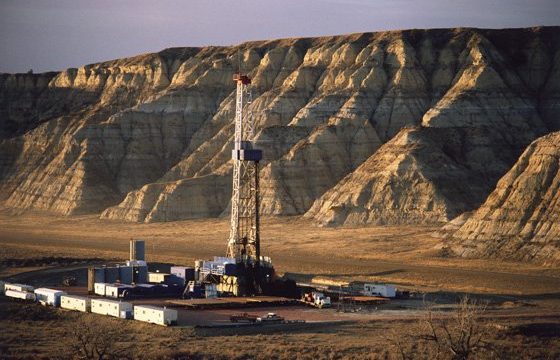Industrial Commission Nixes Public Comment For Oil Drilling On Private Land, Embraces Flaring Reduction Plan

Citing concerns over private property rights, and whether or not the North Dakota Industrial Commission even has the authority to do such a thing. Governor Jack Dalrymple yesterday proposed an amendment to “extraordinary places” regulations that removes private lands from consideration.
Many in North Dakota, particularly those in the west, felt that allowing public comment for oil development on private land made about as much sense as allowing public comment on whether or not a farmer was going to grow corn or wheat. And they are right. It’s one thing to provide regulations for how oil drilling in North Dakota will be done. It’s quite another to turn over the development of minerals on private land to public comment.
Besides, a lot of the issues surrounded merely cosmetic concerns like viewscapes. The proponents of this policy seem to think that they shouldn’t have to look at oil rigs on other people’s property. “Viewscapes are not constitutionally protected,” Agriculture Commissioner and NDIC member Doug Goehring said before the unanimous vote in favor of the change. “They may be beautiful, and we like them, but there is still a [property] right that exists.”
The issue isn’t over. Governor Dalrymple has punted the issue to the legislature, so expect a bill to be introduced on this issue next year.
For what it’s worth, though, turning the issue over to the legislature is exactly what critics of the policy like Minot Rep. Roscoe Streyle called for.
You can read the “extraordinary places” regulations as passed here.
Buried under the brawl over the “extraordinary places” issue, though, was the NDIC’s embrace of a flaring plan proposed by the oil industry. Oil and gas producers in the state have increased the amount of gas captured by 135 percent since 2011, but production is still outpacing capture and so the burn off of excess gas from the oil fields continues to grow.
Currently about one third of all gas produced in the North Dakota oil fields is burned off. But the North Dakota Petroleum Council, representing the oil industry in the state, is pushing a plan to reduce flaring to 20 percent within two years, and yesterday the NDIC accepted a part of that plan requiring oil drillers to submit a gas capture plan.
It will be interesting to see if the oil industry can hit that flaring goal, and if they do it will be an amazing accomplishment. So far, they’re getting what they want from the state.




